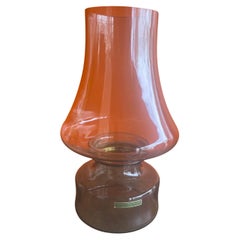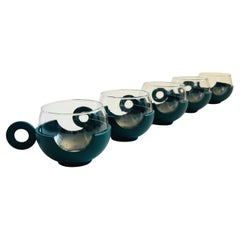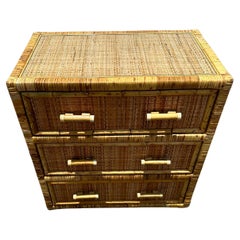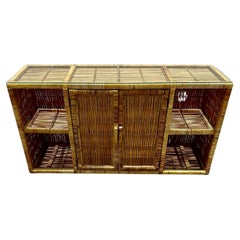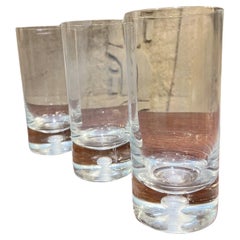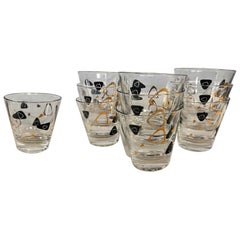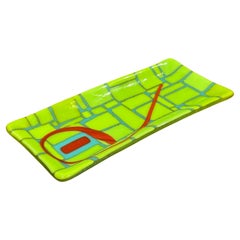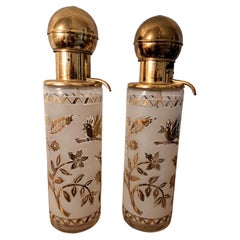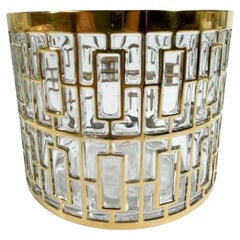Mcm Vintage Glasses
20th Century Japanese Scandinavian Modern Mcm Vintage Glasses
Glass
Mid-20th Century Mid-Century Modern Mcm Vintage Glasses
Glass, Plastic
1970s Philippine Mid-Century Modern Mcm Vintage Glasses
Rattan, Glass
1970s Philippine Mid-Century Modern Mcm Vintage Glasses
Rattan, Glass
Mid-20th Century Mid-Century Modern Mcm Vintage Glasses
Glass
Mid-20th Century American Mid-Century Modern Mcm Vintage Glasses
Gold
Mid-20th Century American Mid-Century Modern Mcm Vintage Glasses
Art Glass
Mid-20th Century American Mid-Century Modern Mcm Vintage Glasses
Glass
Mid-20th Century American Mid-Century Modern Mcm Vintage Glasses
Glass
Mid-20th Century American Mid-Century Modern Mcm Vintage Glasses
Glass
Mid-20th Century American Mid-Century Modern Mcm Vintage Glasses
Glass
Mid-20th Century Mid-Century Modern Mcm Vintage Glasses
Glass
Mid-20th Century American Mid-Century Modern Mcm Vintage Glasses
Gold
Mid-20th Century Swedish Mid-Century Modern Mcm Vintage Glasses
Glass
Mid-20th Century Danish Mid-Century Modern Mcm Vintage Glasses
Art Glass, Blown Glass
Mid-20th Century American Mid-Century Modern Mcm Vintage Glasses
Glass
Mid-20th Century Danish Mid-Century Modern Mcm Vintage Glasses
Blown Glass
Mid-20th Century Swedish Mid-Century Modern Mcm Vintage Glasses
Glass
20th Century Italian Mid-Century Modern Mcm Vintage Glasses
Art Glass
1960s Italian Mid-Century Modern Mcm Vintage Glasses
Art Glass, Blown Glass, Opaline Glass
Mid-20th Century American Mid-Century Modern Mcm Vintage Glasses
Glass
Late 20th Century American Mcm Vintage Glasses
Glass
Mid-20th Century American Mid-Century Modern Mcm Vintage Glasses
Sterling Silver
Mid-20th Century American Mid-Century Modern Mcm Vintage Glasses
Glass
1960s American Mcm Vintage Glasses
Glass
Mid-20th Century American Mid-Century Modern Mcm Vintage Glasses
Glass
Mid-20th Century American Mid-Century Modern Mcm Vintage Glasses
Glass
Mid-20th Century Japanese Mid-Century Modern Mcm Vintage Glasses
Glass
Mid-20th Century American Mid-Century Modern Mcm Vintage Glasses
Glass
1970s American Mid-Century Modern Mcm Vintage Glasses
Glass
Mid-20th Century American Mid-Century Modern Mcm Vintage Glasses
Glass
Mid-20th Century American Mid-Century Modern Mcm Vintage Glasses
Glass
Mid-20th Century Swedish Scandinavian Modern Mcm Vintage Glasses
Glass
Late 20th Century American Mid-Century Modern Mcm Vintage Glasses
Glass
1950s American Mid-Century Modern Mcm Vintage Glasses
Glass
Mid-20th Century American Mid-Century Modern Mcm Vintage Glasses
Glass
Mid-20th Century American Mid-Century Modern Mcm Vintage Glasses
Glass
20th Century American Mid-Century Modern Mcm Vintage Glasses
Metal
1970s American Mid-Century Modern Mcm Vintage Glasses
Glass
Mid-20th Century American Mid-Century Modern Mcm Vintage Glasses
Glass
Mid-20th Century American Mid-Century Modern Mcm Vintage Glasses
Glass
Mid-20th Century European Mid-Century Modern Mcm Vintage Glasses
Metal
1960s American Mid-Century Modern Mcm Vintage Glasses
Glass
Mid-20th Century Belgian Mid-Century Modern Mcm Vintage Glasses
Stainless Steel
Mid-20th Century American Mid-Century Modern Mcm Vintage Glasses
Glass
Mid-20th Century American Mid-Century Modern Mcm Vintage Glasses
Glass
Mid-20th Century American Mid-Century Modern Mcm Vintage Glasses
Chrome
1960s American Mcm Vintage Glasses
Glass
Mid-20th Century American Mid-Century Modern Mcm Vintage Glasses
Metal
Late 20th Century German Mid-Century Modern Mcm Vintage Glasses
Stainless Steel
Mid-20th Century American Mid-Century Modern Mcm Vintage Glasses
Glass
1950s German Mid-Century Modern Mcm Vintage Glasses
Brass
Mid-20th Century American Mid-Century Modern Mcm Vintage Glasses
Glass
Mid-20th Century American Mid-Century Modern Mcm Vintage Glasses
Metal
Mid-20th Century American Mid-Century Modern Mcm Vintage Glasses
Metal
Mid-20th Century English Mid-Century Modern Mcm Vintage Glasses
Metal, Brass
Mid-20th Century American Mid-Century Modern Mcm Vintage Glasses
Ceramic
1960s American Mid-Century Modern Mcm Vintage Glasses
Bamboo
- 1
Mcm Vintage Glasses For Sale on 1stDibs
How Much are Mcm Vintage Glasses?
A Close Look at Mid-century-modern Furniture
Organically shaped, clean-lined and elegantly simple are three terms that well describe vintage mid-century modern furniture. The style, which emerged primarily in the years following World War II, is characterized by pieces that were conceived and made in an energetic, optimistic spirit by creators who believed that good design was an essential part of good living.
ORIGINS OF MID-CENTURY MODERN FURNITURE DESIGN
- Emerged during the mid-20th century
- Informed by European modernism, Bauhaus, International style, Scandinavian modernism and Frank Lloyd Wright’s architecture
- A heyday of innovation in postwar America
- Experimentation with new ideas, new materials and new forms flourished in Scandinavia, Italy, the former Czechoslovakia and elsewhere in Europe
CHARACTERISTICS OF MID-CENTURY MODERN FURNITURE DESIGN
- Simplicity, organic forms, clean lines
- A blend of neutral and bold Pop art colors
- Use of natural and man-made materials — alluring woods such as teak, rosewood and oak; steel, fiberglass and molded plywood
- Light-filled spaces with colorful upholstery
- Glass walls and an emphasis on the outdoors
- Promotion of functionality
MID-CENTURY MODERN FURNITURE DESIGNERS TO KNOW
- Charles and Ray Eames
- Eero Saarinen
- Milo Baughman
- Florence Knoll
- Harry Bertoia
- Isamu Noguchi
- George Nelson
- Danish modernists Hans Wegner and Arne Jacobsen, whose emphasis on natural materials and craftsmanship influenced American designers and vice versa
ICONIC MID-CENTURY MODERN FURNITURE DESIGNS
- Eames lounge chair
- Nelson daybed
- Florence Knoll sofa
- Egg chair
- Womb chair
- Noguchi coffee table
- Barcelona chair
VINTAGE MID-CENTURY MODERN FURNITURE ON 1STDIBS
The mid-century modern era saw leagues of postwar American architects and designers animated by new ideas and new technology. The lean, functionalist International-style architecture of Le Corbusier and Bauhaus eminences Ludwig Mies van der Rohe and Walter Gropius had been promoted in the United States during the 1930s by Philip Johnson and others. New building techniques, such as “post-and-beam” construction, allowed the International-style schemes to be realized on a small scale in open-plan houses with long walls of glass.
Materials developed for wartime use became available for domestic goods and were incorporated into mid-century modern furniture designs. Charles and Ray Eames and Eero Saarinen, who had experimented extensively with molded plywood, eagerly embraced fiberglass for pieces such as the La Chaise and the Womb chair, respectively.
Architect, writer and designer George Nelson created with his team shades for the Bubble lamp using a new translucent polymer skin and, as design director at Herman Miller, recruited the Eameses, Alexander Girard and others for projects at the legendary Michigan furniture manufacturer.
Harry Bertoia and Isamu Noguchi devised chairs and tables built of wire mesh and wire struts. Materials were repurposed too: The Danish-born designer Jens Risom created a line of chairs using surplus parachute straps for webbed seats and backrests.
The Risom lounge chair was among the first pieces of furniture commissioned and produced by celebrated manufacturer Knoll, a chief influencer in the rise of modern design in the United States, thanks to the work of Florence Knoll, the pioneering architect and designer who made the firm a leader in its field. The seating that Knoll created for office spaces — as well as pieces designed by Florence initially for commercial clients — soon became desirable for the home.
As the demand for casual, uncluttered furnishings grew, more mid-century furniture designers caught the spirit.
Classically oriented creators such as Edward Wormley, house designer for Dunbar Inc., offered such pieces as the sinuous Listen to Me chaise; the British expatriate T.H. Robsjohn-Gibbings switched gears, creating items such as the tiered, biomorphic Mesa table. There were Young Turks such as Paul McCobb, who designed holistic groups of sleek, blond wood furniture, and Milo Baughman, who espoused a West Coast aesthetic in minimalist teak dining tables and lushly upholstered chairs and sofas with angular steel frames.
Generations turn over, and mid-century modern remains arguably the most popular style going. As the collection of vintage mid-century modern chairs, dressers, coffee tables and other furniture for the living room, dining room, bedroom and elsewhere on 1stDibs demonstrates, this period saw one of the most delightful and dramatic flowerings of creativity in design history.
- What is MCM art glass?1 Answer1stDibs ExpertApril 5, 2022MCM art glass is a shortened form of the phrase mid-century modern art glass. It describes works of art produced out of glass by artisans working during the middle of the 20th century. You'll find a variety of MCM art glass on 1stDibs.
- 1stDibs ExpertNovember 4, 2024To identify vintage glass, you will need to figure out if your item is between 20 and 99 years old. The easiest way to do so is first to determine the maker by looking for and then researching any markings present on the glassware. Unfortunately, vintage glass is often marked with paper and foil labels, which tend to come loose with use. As a result, experience and expertise are often necessary to accurately perform the identification process, so you may wish to have a certified appraiser or experienced antique dealer weigh in if your glassware is unmarked. Find a diverse assortment of vintage glassware on 1stDibs.
- 1stDibs ExpertAugust 8, 2024To tell if glass is vintage, first look for markings, often located on the bottom or inside of glassware. By researching the mark via online resources, you can determine the maker and learn more about your piece. Any glassware produced between 20 and 100 years ago qualifies as vintage, while older pieces are antique. In the event that you can't find any markings, a certified appraiser or knowledgeable antiques dealer can assist you. Find a wide variety of vintage glassware on 1stDibs.
- What is vintage slag glass?1 Answer1stDibs ExpertApril 5, 2022Slag glass is pressed opaque glass that has colored streaks throughout. It was used in everything from lamp shades to decorative bowls. On 1stDibs, you can find a collection of authentic slag glass pieces from some of the world’s top sellers.
- 1stDibs ExpertSeptember 9, 2024To tell if glass is vintage, first look for a marking that indicates the maker. By researching the manufacturer using trusted online resources, you can learn when it produced pieces similar to yours and get a rough idea of your glassware's age. Any glass produced between 20 and 99 years ago is vintage. If you need assistance with the dating process, seek the opinion of a certified appraiser or knowledgeable antique dealer. Explore a diverse assortment of vintage glassware on 1stDibs.
- 1stDibs ExpertAugust 20, 2024To tell if a glass vase is vintage, first research the maker. Look for markings on the inside and base, and then research them using trusted online resources to determine who produced your vase. By looking at when the maker was active and producing pieces similar to yours, you can typically roughly estimate its age. If your vase is between 20 and 99 years old, it is vintage. Vases that are 100 years old or older are antiques. For help with dating, consult a certified appraiser or knowledgeable antique dealer. On 1stDibs, find a collection of glass vases.
- Is vintage glass worth anything?1 Answer1stDibs ExpertSeptember 16, 2024Yes, some vintage glass is worth something. Collectors are often on the hunt for pieces produced by certain makers, such as Blenko, the Culver Glass Company, Dorothy Thorpe, Libbey, Georges Briard and Arcoroc. In addition to who manufactured it, the style, type, age and condition of vintage glassware all impact the potential value. For assistance with the valuation process for pieces in your collection, enlist the help of a certified appraiser or knowledgeable antique dealer. On 1stDibs, find a diverse assortment of vintage glassware.
- 1stDibs ExpertOctober 24, 2024To tell if your vintage glasses are gold, look on the nose bridge and the temples for a purity mark. Makers often stamped their solid gold pieces with “12K,” “10K,” “14K” and other markings to identify their gold eyewear. You can research all of these markings using trusted online resources. Should you locate a "GF" mark, it is likely that your glasses are gold-filled rather than solid gold. This means that the frames are predominantly a less expensive metal but do have a thin layer of genuine gold alloy as a finish. Another mark that indicates your glasses contain some gold is "RGF." The mark stands for “rolled gold filled.” Glasses bearing this mark feature a gold-plated finish that is thinner than what's found on traditional gold-filled frames. For assistance identifying your eyeglass frame material, consult a certified appraiser or experienced antique dealer. Explore a selection of vintage glasses on 1stDibs.
- 1stDibs ExpertAugust 29, 2024To tell if Murano glass is vintage, it's usually necessary to conduct some online research using trusted sources. Start by looking for a maker's mark and then cross-referencing it with images published online to determine who made your piece. By learning more about the manufacturer and what they produced over the years by reading histories and exploring product catalogues, you can estimate the rough age of your piece. For Murano glass to be considered vintage, it must be between 20 and 99 years old. Older pieces are classified as antique. If you need assistance with dating your glassware, seek the help of a certified appraiser or knowledgeable antique dealer. Explore a range of Murano glass on 1stDibs.
- 1stDibs ExpertNovember 2, 2023To tell if vintage Cartier glasses are real, first look for the brand's logo on the outside of the arms. It should be spelled correctly and in the French luxury fashion house's iconic gold-toned italic font. Because some vintage pieces may lack serial numbers and other markings used to identify contemporary eyewear, you may wish to enlist the help of a licensed appraiser or knowledgeable dealer for assistance with authentication. Explore a selection of Cartier glasses on 1stDibs.
- 1stDibs ExpertApril 5, 2022The easiest way to tell if a bead is glass or plastic is to feel it. Glass beads will be cooler to the touch, whereas plastic beads will be closer to room temperature and warm up quickly in your hands. Another test you can perform is to listen to the sound. Glass has a distinctive ring since it’s harder whereas plastic is softer and has a duller sound. Shop a range of vintage glass bead pieces on 1stDibs.
Read More
This Paavo Tynell Chandelier Is a Radiant Bouquet
The alluring pendant light exemplifies the designer’s winsome mid-career work.
End Your Quest for Fire with This Handmade Majolica Chimney
Prehistoric motifs give the mid-century Italian fireplace an elemental feel.
Who Were Guillerme et Chambron? French Veterans of WWII with a Knack for Clever, Quirky and Livable Furniture
Their charming solid-oak pieces offer homes utility and comfort.
39 Incredible Swimming Pools
It's hard to resist the allure of a beautiful pool. So, go ahead and daydream about whiling away your summer in paradise.
The 21 Most Popular Mid-Century Modern Chairs
You know the designs, now get the stories about how they came to be.
Iconic Furniture Makes This 1958 Midwestern Home a True Mid-Century Gem
Designer Susan Yeley turned to 1stDibs to outfit an Indiana home with standout pieces that complement its modernist style.
The Ultimate Guide to Types of Tables for the Home
Whether you’re just moving in or ready to give your home a makeover, our guide will give you pointers on tables that are fitting for every room, nook and hallway.
Why Is Italy Such a Hotbed of Cool Design?
Patrizio Chiarparini of Brooklyn’s Duplex gallery sheds light on the lasting legacy of Italy’s postwar furniture boom.
